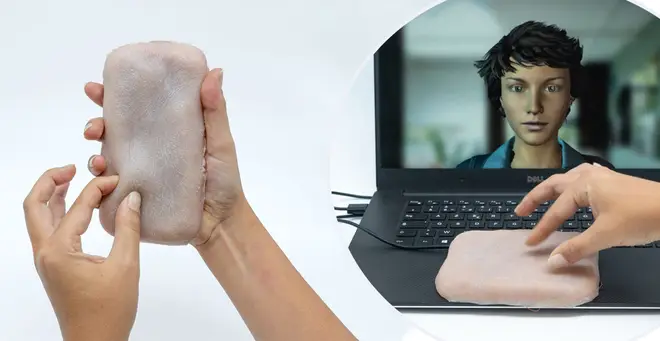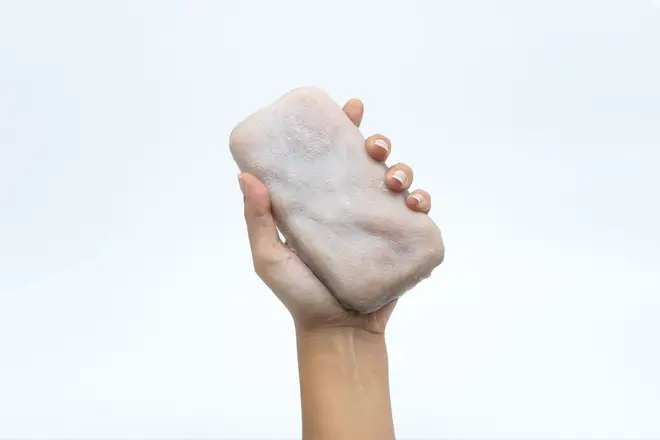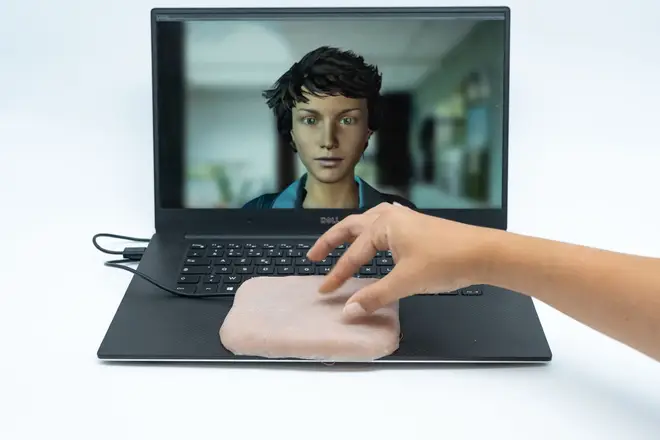Scientists create ticklish phone case that reacts like human skin when touched
22 October 2019, 17:18

The artificial skin prototype can be wrapped around smartphones to make them react when pinched or caressed
Smartphones could soon be wrapped in artificial skin that reacts to human contact, scientists have claimed.
Researchers at the University of Bristol, in partnership with Telecomm ParisTech and Sorbonne University in Paris, have developed an artificial human skin prototype that moves when pinched or caressed - which they claim can be wrapped around mobile devices.
Read more: Tiffany & Co are selling an advent calendar like no other, but it costs a whopping £104,000
Skin-On interface can be wrapped around laptops, tablets and phones to give them a human feel - and developers say their work opens the door for 'anthropomorphic devices' in future.

Dr Anne Roudaut, associate professor at the University of Bristol, told the PA: "It [the artificial skin] may look unconventional probably because we are used to our senseless and rigid casings, but we feel there are strong advantages of using more malleable technologies.
"And the familiarity of the skin provides a more natural interface for end-users.
Read more: Just 20 per cent of parents regularly read to their kids at bedtime, study finds
"The artificial skin was created using two layers of silicone – dubbed 'dermis' and 'hypodermis' layers – with an electrode layer in the middle made up of ultra-thin wires that act as sensors."
And Marc Teyssier, a PhD student at Telecomm ParisTech and lead study author, added: "A strong grip conveys anger while tickling the skin displays a laughing emoji and tapping creates a surprised emoji.

"This skin has a subtle surface texture – the sensing is performed in the dermis and the hypodermis layer (fat layer) and the elasticity is what allows us to perform expressive gestures such as pinching."
He continued: "When we are talking to someone face-to-face, we sometimes use touch to convey emotions and more generally enrich the discourse.
"Now that mediated communication is performed through the devices, we lost this communication modality.'With this project, we tried to combine the best of the two."
NOW READ:
Headteacher writes heartwarming letter to tooth fairy after six-year-old loses his tooth

































